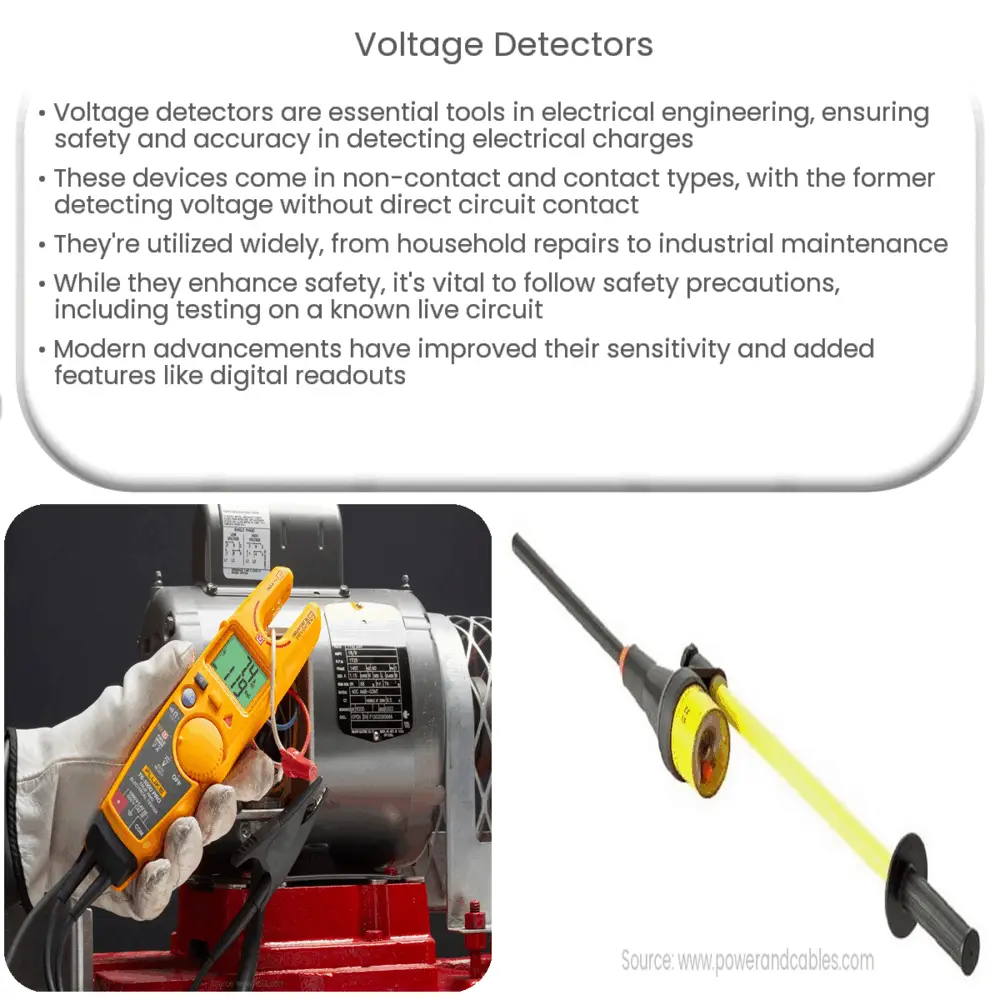Explore the essentials of voltage detectors, their types, applications, operation, safety precautions, and future in our comprehensive guide.

Introduction to Voltage Detectors
A voltage detector is an essential tool in the field of electrical engineering and electronics, frequently used by professionals to ensure safety and accuracy in various applications. Understanding the purpose and functioning of these devices is critical to those working with electrical and electronic systems.
Definition of Voltage Detectors
Voltage detectors are devices designed to determine the presence or absence of an electrical charge in a piece of equipment. They’re typically used by electricians and service technicians to verify that an electrical circuit is ‘dead’ before beginning any kind of repair or maintenance work.
Types of Voltage Detectors
Application of Voltage Detectors
Voltage detectors are utilized in a broad range of scenarios, from industrial applications to household settings. In the home, voltage detectors can be used to check if electrical wires are live during renovation or repair work, avoiding potential accidents. In industrial contexts, they are indispensable for diagnosing electrical problems and ensuring that circuits are safely de-energized before maintenance.
How Voltage Detectors Work
The operation of a voltage detector is relatively straightforward. The sensor tip of the detector is brought close to a conductor. If voltage is present, an electric field will be established between the conductor and the sensor tip. This electric field causes the movement of charges in the detector, triggering an indicator – typically a light or a buzzer.
Key Features of Voltage Detectors
Voltage detectors are compact, portable, and easy to use, making them an essential tool in any electrician’s toolkit. They’re often pen-shaped, fitting easily into a pocket or tool belt. A key feature of these devices is their indicator system – a visual or auditory signal, or sometimes both, that informs the user about the presence of voltage.
Voltage Detector Safety Precautions
While voltage detectors are designed for safety, it’s crucial to follow certain precautions while using them. Always ensure the detector is in good working order before use by testing on a known live circuit. Never assume a circuit is de-energized based solely on a voltage detector reading, always double-check by turning off the main power supply. Finally, be aware that high humidity or wet conditions can affect the detector’s accuracy.
The Future of Voltage Detectors
With advancements in technology, modern voltage detectors have seen improvements in sensitivity, safety features, and accuracy. Some models can now even provide a digital readout of the voltage level, while others have wireless capabilities allowing for remote testing. As our reliance on electricity continues to grow, the demand for more sophisticated and accurate voltage detection tools is likely to increase.
Conclusion
In conclusion, voltage detectors are vital safety tools used by electricians and technicians globally. They help in identifying the presence of voltage, enabling the safe repair and maintenance of electrical equipment. Though seemingly simple devices, their role in preventing electrical accidents cannot be overstated. As technology advances, we can expect to see more refined and versatile voltage detectors in the years to come, further enhancing safety and efficiency in the field of electrical engineering.

